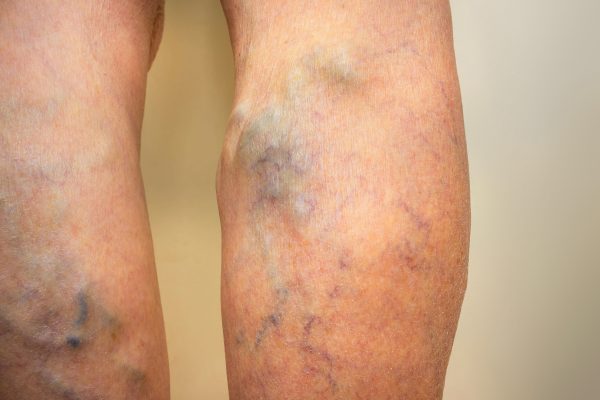The Benefits of Laser Vein Ablation for Treating Varicose Veins
At one time, the only option for treating varicose veins was an invasive surgical procedure called vein stripping. Fortunately, there have been significant advances in this area of medicine. Today, vascular surgery is rarely necessary. New treatment methods, including Endоvеnоuѕ Laser Ablаtіоn (EVLA), are minimally invasive and can be performed in your vein doctor’s office. Very little recovery time is needed, and most patients return to their normal activities the same day.

The Benefits of Laser Vein Ablation for Treating Varicose Veins
What Causes Varicose Veins and Spider Veins?
When your circulatory system is working well, arteries carry oxygenated blood from the lungs to the rest of your body. Once the oxygen has been delivered to your organs and tissues, veins carry the deoxygenated blood back to your heart, which pumps it to the lungs for a fresh oxygen supply. Varicose veins and spider veins develop because your blood vessels are struggling to move blood efficiently.
Veins are working against gravity to move blood from the lower half of your body to your heart. Nonetheless, they are able to get the job done with the help of one-way valves strategically placed throughout the vessels. The valves open to let blood through, then they close to prevent any backflow.
Injury or disease can damage the valves, which allows blood to leak through. As the leak gets more serious, blood starts to pool in the lower part of the body. This puts additional pressure on the vessels, often damaging the vein walls. In many cases, the pressure causes more valves to fail, making the problem worse.
As vessel walls grow weaker and more blood collects in the veins, they start to swell. When the veins are located close to the surface of your skin, they tend to protrude against your skin. For example, varicosities are common in the long saphenous vein, because it is located just beneath the skin.
When veins take on a thick, twisted, rope-like appearance, they are referred to as varicose veins. When they resemble red, blue, or purple webs, they are referred to as spider veins. In either case, the issue may be more serious than a bit of swelling and an unattractive appearance. Varicose and spider veins can signal underlying vein disease called Chronic Venous Insufficiency (CVI).
CVI often goes undiagnosed, because general practitioners, dermatologists, and physicians in other specialties simply focus on treating the specific varicose veins and spider veins causing your discomfort. Visiting a specialized vein doctor in New York or vein doctor in New Jersey ensures that you receive an accurate diagnosis and the most appropriate treatment for your condition.
What is Laser Vein Ablation?
Endоvеnоuѕ Laser Ablаtіоn (EVLA), often called laser vein ablation, is a popular method of treating varicose veins and spider veins. It has been studied extensively, and research shows it is both safe and effective. Because there is no general anesthesia involved, your vein treatment clinic typically offers the procedure on-site.
Laser vein ablation begins with the injection of a local anesthetic to numb the area being treated. This ensures that you experience minimal discomfort during the procedure. Next, a small incision is made in the skin. Using ultrasound guidance for accuracy, your vein doctor delivers laser energy to the vein through a tiny laser fiber. The laser energy permanently closes the treated vein, and blood is automatically rerouted to other, healthier veins. The tissue from the sealed vessel is eventually reabsorbed by your body, eliminating the pain, swelling, and unsightly appearance of varicose and spider veins.
The entire procedure takes just 30 to 45 minutes, depending on the number and severity of veins being treated. Though you will have to wear a compression bandage for a couple of days, then compression stockings for a bit longer, you can return to most of your normal activities right away. Your vein doctor will schedule a follow up appointment to ensure the procedure was successful.
Laser vein ablation has been used since 2003, and studies have shown that it is more than 90 percent effective. Unlike the now-obsolete vein stripping procedure offered by vascular surgeons, recurrence of varicose veins is unusual after laser vein ablation. Your vein doctor in NY or vein doctor in NJ can conduct a full exam to determine if this treatment option is right for you.
What are the Benefits and Drawbacks of Laser Vein Ablation?
Overall, laser vein ablation is considered a safe and effective solution for treating varicose veins, spider veins, and underlying vein disease such as Chronic Venous Insufficiency. These are the primary benefits and drawbacks to discuss with your vein specialist when making your decision:
Benefits:
- No general anesthesia required
- No surgical incision required
- Fewer complications than surgery
- More effective than surgery, both short-term and long-term
- Minimal pain during and after the procedure
- Low risk of scarring from the procedure
- Little or no down-time following laser vein ablation
Drawbacks:
- As with any procedure that requires cutting the skin, there is a small risk of infection
- Occasional bruising and/or tenderness in the treated area
The Board-Certified experts at the Vein Treatment Clinic specialize in diagnosing and treating vein disease. They will conduct a thorough exam to determine the underlying cause of your varicose veins and spider veins, and they will review all of your treatment options with you. If laser vein ablation is the best choice for your situation, an experienced vein specialist will perform the procedure on-site.
Visit the Vein Treatment Clinic online for more information about treatment options and to schedule your initial consultation. Clinic staff are also available to schedule your appointment by phone at (844) 690-1788.








